IoT Product Roundup AWS, Qualcomm, Cognosos and More
The latest products from the IoT industry

From AWS expanding its IoT FleetWise capabilities to Cognosos’ Bluetooth-enabled driver tags, Eseye’s newly-released industrial Internet of Things readiness index and everything in between, here are some of the latest products from the world of IoT.
AWS IoT FleetWise Expands to Simplify Vehicle Data Collection
AWS’ IoT FleetWise platform now supports object storage in Amazon Simple Storage Service (Amazon S3).
The new feature makes it easier and more cost-effective for automotive companies to create and manage vehicle data. Using the platform, a customer can select where and how this data is stored and analyzed in the cloud depending on the required use case.
AWS IoT FleetWise allows customers to then use this data to improve vehicle quality, electrification and autonomy.
“Automotive companies are searching for more efficient ways to simplify data collection from the vehicles,” the company said in a statement. “Amazon S3 support for AWS IoT FleetWise helps optimize the cost of data storage and also provide additional mechanisms to use vehicle data.”
According to AWS, automotive companies can use the new feature to gain insights on things like driving behaviors, infotainment interactions and long-term maintenance needs for electric vehicle (EV) fleets.
One partner, National Instruments, is already using AWS IoT FleetWise with Amazon S3 to improve battery performance on EVs.
“Building a data ingestion and data pipeline workflow for battery monitoring systems with AWS IoT FleetWise has given us near-real-time access to electric vehicle data,” said Thomas Benjamin, National Instruments’ CTO. “Now, with AWS IoT FleetWise support for Amazon S3, our data engineers will get the batched data in an extensible, flexible, and cost-efficient manner prior to bringing that data into our inference models.”
.png?width=700&auto=webp&quality=80&disable=upscale)
Qualcomm Launches New Satellite IoT Chipsets
Qualcomm has unveiled two new designs of its modem chipsets with satellite capabilities, the Qualcomm 212S and Qualcomm 9205S.
The new models are designed for off-grid industrial use cases which require non-terrestrial network (NTN) connectivity.
The 212S Modem allows stationary IoT devices to use satellite communication for off-grid connectivity, while the 9205S Modem connects IoT devices to cellular and satellite networks for consistent coverage.
The new chipsets are being deployed in collaboration with Skylo, an NTN service provider, to help manage device connection to the network.
The modems build on Qualcomm’s Aware platform, established at the beginning of the year to enable high-level asset tracking.
“Qualcomm Aware…allows companies to better monitor and track valuable assets virtually anytime and anywhere around the world,” Jeff Torrance, Qualcomm’s senior vice president of connected smart systems. “Our Qualcomm 212S and Qualcomm 9205S chips take our IoT tracking and monitoring capabilities one step further, providing connectivity and coverage even in the most remote areas.”
“We’ll…help to deliver satellite connectivity through the Qualcomm Aware Platform using our network of satellite operators to power a range of IoT use cases with optimized integrations through the Qualcomm 212S and 9205S modems for stationary and in-transit uses,” said Parthsarathi Trivedi, Skylo CEO.
Possible use cases of the modems include utility grid monitoring, early fire detection reporting, on-shore and off-shore mining installations, asset tracking within the agricultural and utility sectors, and environmental management.
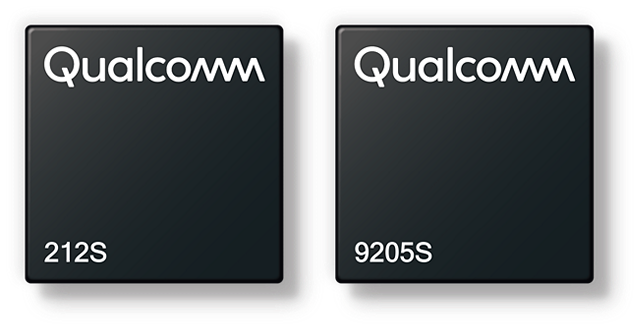
DJI Unveils New Enterprise Drone
DJI has unveiled its latest enterprise drone, the DJI Matrice 350 RTK, which has possible applications in the public safety, energy, mapping, infrastructure and forestry industries.
The company said the Matrice 350 sets a new standard in the commercial drone industry, featuring a new video transmission system, more efficient battery system, and payload expansion capabilities.
“It’s great to see how commercial drone pilots around the world use DJI platforms to carry out their operations with increased safety and more effectively than using traditional technology,” said Christina Zhang, DJI’s senior director of corporate strategy. “The new capabilities offered by the advanced technology of the M350 RTK enables operators to push these boundaries even further.”
The M350 RTX has a 55-minute flight time, 6 pound payload capacity and a transmission distance of 12 miles. The drone’s integrated camera has also been updated to provide better navigation capabilities for night-time flights. It is also fitted with a six-directional binocular vision system and an infrared sensing system for six-directional awareness.
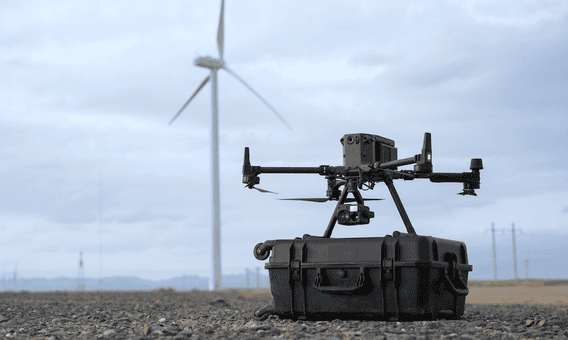
Cognosos’ Bluetooth-Enabled Driver Tags
Cognosos has unveiled what it calls the first-of-its-kind smart Driver Tag, designed to connect vehicle data to driver activity and afford operators with greater insight and visibility into driver behavior.
The Driver Tag is embedded with Bluetooth technology and is worn by drivers working to move vehicles from manufacturing to distribution. The tag syncs up to asset-tracking badges placed inside the vehicle to match vehicle and driver data.
By deploying the driver tags, users can review vehicle-specific movement data, and identify who is responsible for each movement and the length of time each driver takes to perform a given vehicle delivery.
“Right now, the industry has no reliable way to understand how efficiently–or inefficiently–cars get moved around, let alone who is moving them in the yards,” said Adrian Jennings, Cognosos’chief product officer. “We can now give OEMs game-changing visibility of operations within their yards, establishing greater levels of accountability and delivering metrics that improve efficiency.”
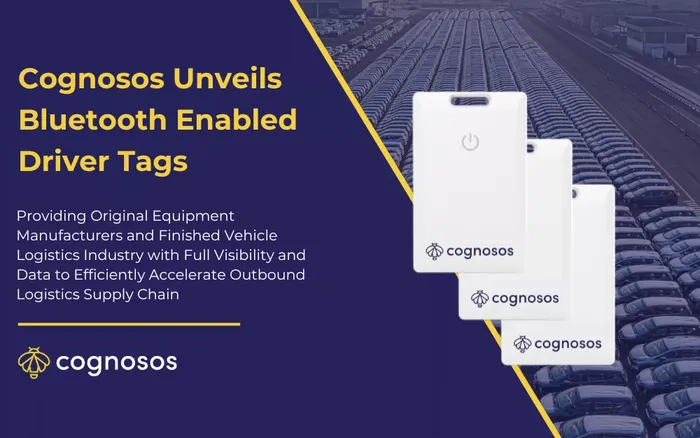
Eseye Launches “Industry’s First” IoT Readiness Level Index
Eseye has launched its new IoT Readiness Level (IRL) Index – in what it says is an IoT industry first.
Based on NASA's Technology Readiness Level (TRL), the IRL Index is used to deliver a bespoke IoT readiness assessment to each customer, showing their IoT readiness in the context of the wider market. Using this assessment, Eseye said businesses can then tailor their response to address gaps.
"We recognized that every IoT use case is different, and many were struggling to successfully launch an IoT solution,” said Nick Earle, Eseye’s CEO. “This was due to particular challenges with their device and project as well as the lack of an objective standard in the sector.
“Our IRL Index leverages a set of detailed metrics to provide a customer rating on a 0 to 9 scale, offering an objective assessment of each organization’s capabilities."
In addition to the IoT Readiness Framework, Eseye also launched a new subscription-based service called IoT LaunchPad. The service offers a range of IoT services for customers looking to roll out IoT devices faster and with higher success, including technology integration, device testing and validation and certification support.
.png?width=579&auto=webp&quality=80&disable=upscale)
LlamaZoo Releases Digital Twin Editing Software
LlamaZoo, a business intelligence provider, has announced the beta release of its digital twin editing software, Clarity Digital Twin (ClarityDT).
The software uses computing technologies from Nvidia and is accessible on tablets, desktops and VR headsets, and soon, Apple Vision Pro.
ClarityDT collects and analyzes data from several sources, including satellite imaging and physical mapping. Using this, companies can create digital 3D copies of assets and sites such as manufacturing facilities. Using mixed reality, companies can then work to manage and optimize assets.
"Pairing ClarityDT with Nvidia and the Apple Vision Pro headset creates an incredibly powerful visualization tool that transcends language and simplifies subject matter and domain-specific knowledge," said Charles Lavigne, LlamaZoo’s CEO. "Integrating this spatial technology breaks down barriers, accelerating business decisions by providing real-time shared experiences and understanding of data."
Other potential applications include environmental disaster management, land conservation management, and manufacturing process optimization.
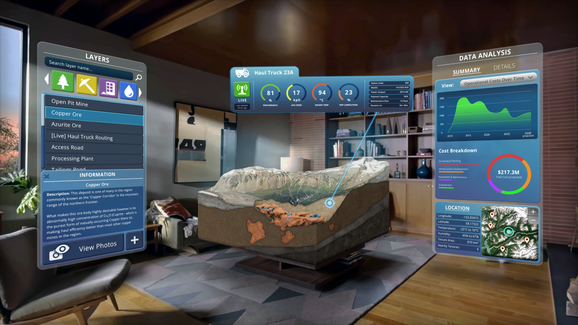
Avidbots Releases Floor-Scrubbing Industrial Robot
Avidbots has launched what it says is the first cleaning robot designed specifically for warehouses and manufacturing spaces, designed to improve cleaning “quality, efficiency and productivity.”
The robot, Neo 2W, uses AI to autonomously navigate through and clean the industrial space, avoiding debris and workers as it cleans.
“The release of Neo 2W comes at a timely moment when 3PL and manufacturing companies are looking for solutions that bring the highest operational efficiencies,” said Faizan Sheikh, Avidbots’ CEO. “With the use of Neo 2W, companies are able to combat labor supply challenges and automate the time-consuming, labor-intensive task of keeping their facilities clean.
“Neo 2W is the result of extensive involvement from customers based on their experiences using autonomous robots in warehouse settings. Avidbots gathered feedback, tested prototypes in real-life scenarios and utilized this data to deliver a truly purpose-built robot.”
Neo 2W also includes Home Base, which ensures the robot can start and return from any location, and an array of 3D cameras, lasers, and sensors to avoid collisions.
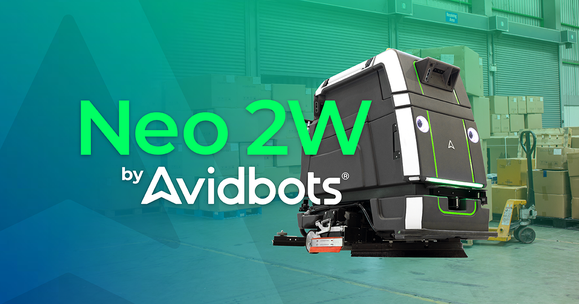
Dobot Unveils New Cobot Series
Dobot launched its new series of collaborative robots (cobots), as well as its CRV500 Smart Camera, at the Automate Show in Detroit, Michigan.
Dobot said its latest cobot series is safer, more efficient and easier to use than previous iterations, integrated with virtual boundaries, payload detection and autonomous electromagnetic brakes.
The CRV500 camera uses Dobot’s 2.5D spatial compensation technology to allow robots to grab tilted or inclined objects with higher precision.
According to the company, its new series aims to “satisfy the most demanding users to accelerate their transition to automated solutions.”
The series features seven robot models with 6 pounds, 11 pounds, 15 pounds, 22 pounds, 26 pounds, 35 pounds and 44 pound payloads. All can perform detailed tasks including pick and place, sorting, screwdriving, welding and palletizing. Potential applications include consumer electronics, automotive, logistics, health care and retail.
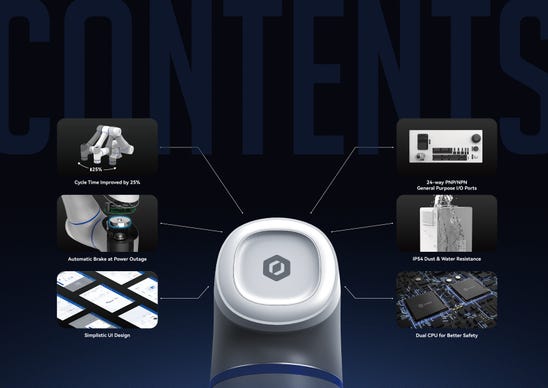
About the Author
You May Also Like








